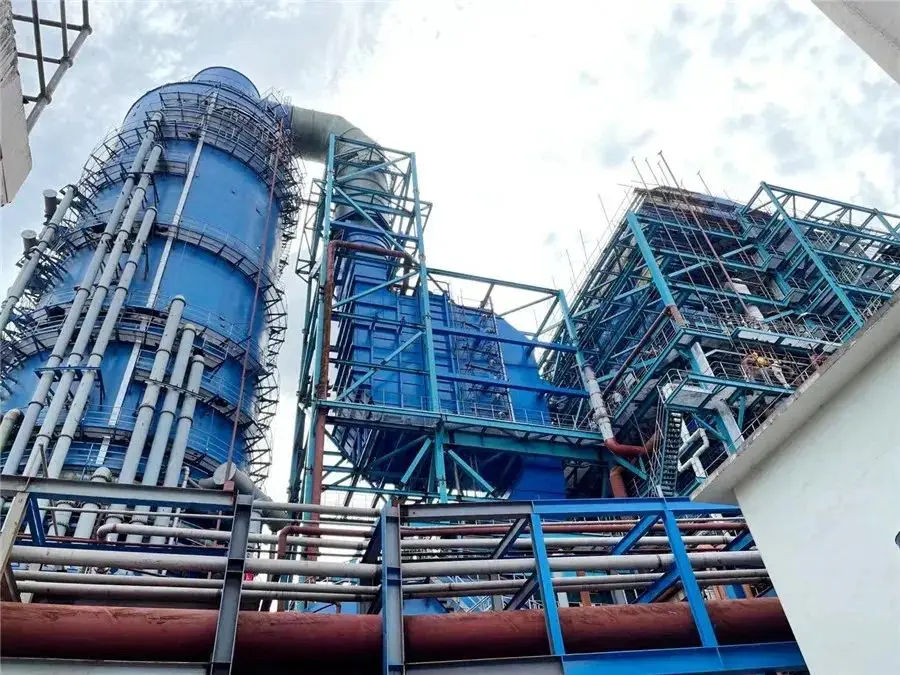
Okt . 22, 2024 11:03 Back to list
Effective Strategies for Managing Steam Pressure in Boiler Systems
Steam Pressure Control in Boilers
Steam pressure control is a crucial aspect of boiler operation, essential for ensuring safety, efficiency, and reliability in various industrial processes. Boilers play a significant role in multiple sectors, including power generation, manufacturing, and chemical production, where steam is utilized for heating, driving turbines, or facilitating chemical reactions. Consequently, maintaining the appropriate steam pressure is vital for optimizing performance and minimizing risks.
Understanding Boiler Pressure
In a boiler, steam pressure refers to the force exerted by the steam within the system. This pressure is critical for determining the temperature of the steam, as higher pressure results in higher temperature steam generation. The relationship between steam pressure and temperature is governed by the steam table, which provides essential data for efficient boiler design and operation.
At the same time, various factors influence the steam pressure within a boiler, including the heat input, feedwater temperature, and the rate of steam consumption. Quick and accurate adjustments to steam pressure are necessary to respond to changes in these parameters to ensure the continuous and stable operation of the boiler.
Importance of Steam Pressure Control
1. Safety One of the foremost reasons for steam pressure control is safety. Excessive steam pressure can lead to catastrophic failures, such as explosions or equipment damage. Regulation through safety valves and pressure sensors helps prevent overpressure scenarios. By monitoring and adjusting steam pressure, operators can minimize the risk of accidents, ensuring compliance with safety regulations.
2. Efficiency Maintaining optimal steam pressure enhances boiler efficiency. Boilers operating at the correct pressure can achieve better heat transfer and fuel efficiency, resulting in reduced operating costs. In many cases, inefficiencies arise from pressure fluctuations that can lead to increased fuel consumption and downtime for maintenance. Automated pressure control systems can adjust parameters in real-time, optimizing performance.
3. Reliability Steam pressure stability affects the reliability of downstream processes. Many industrial operations depend on a consistent steam supply; fluctuations can disrupt production and lead to product quality issues. Reliable control systems help to maintain steady pressure, ensuring that manufacturing processes run smoothly and efficiently.
steam pressure control in boiler

Methods of Steam Pressure Control
Various methods can be employed to regulate steam pressure in boilers
. These include1. Mechanical Control Traditionally, steam pressure control was implemented using mechanical devices like pressure regulators and relief valves. These devices respond to pressure changes by either releasing steam or restricting its flow, thereby maintaining desired pressure levels. However, they may lack the precision and responsiveness needed for modern applications.
2. Manual Control Operators may manually adjust valves and combustion input based on observed pressure levels. While this method can be effective, it is often labor-intensive and prone to human error, making it less suitable for complex or high-demand systems.
3. Automated Control Systems With advancements in technology, automated control systems have become prevalent in modern boiler operations. These systems utilize sensors, controllers, and algorithms to continuously monitor steam pressure and environmental conditions. They can make real-time adjustments automatically, ensuring rapid response to any changes. Additionally, advanced systems can analyze data patterns, facilitating predictive maintenance and reducing the likelihood of unexpected failures.
4. PID Control Proportional-Integral-Derivative (PID) controllers are often implemented in automated systems to enhance pressure control accuracy. PID controllers calculate the error between the desired pressure and the current pressure, applying corrective actions based on proportional, integral, and derivative calculations. This results in a more stable system with minimal overshoot or undershoot of set pressure levels.
Conclusion
Effective steam pressure control in boilers is essential for maintaining safety, efficiency, and operational reliability. As industries evolve and demand for steam continues to grow, the need for advanced control strategies becomes evident. By employing a combination of traditional and modern control methods, facilities can ensure optimal boiler performance, reduce operational risks, and enhance productivity, thus contributing to overall industrial success.
-
How to Maintain a Steam Boiler Expert Tips for Efficiency & Longevity
NewsApr.29,2025
-
Professional Steam Boiler Service AB Expert Maintenance & Repair
NewsApr.29,2025
-
Hot Water Steam Boilers Efficient Heating Solutions & Expert Tips
NewsApr.29,2025
-
Hot Water Boiler Capacity Calculation Guide Efficient Design Tips
NewsApr.28,2025
-
How to Drain a Steam Boiler Step-by-Step Safety Guide
NewsApr.28,2025
-
How to Install a Hot Water Boiler Optimal Pressure & Efficiency Guide
NewsApr.28,2025
Related PRODUCTS






















